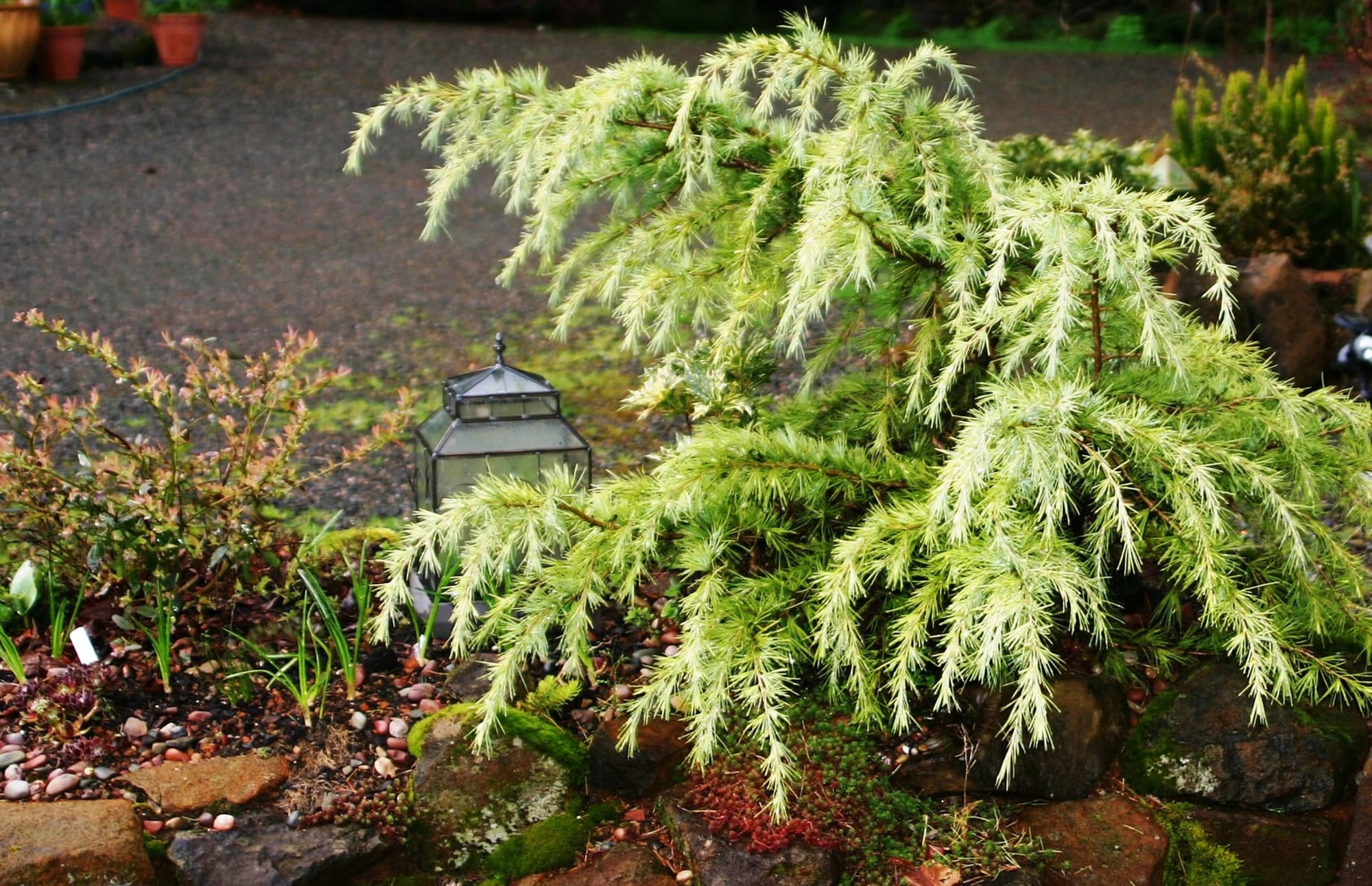The most effective gardens start with a basic selection of plants that offer something of interest throughout the calendar year. In midwinter, the most striking plant in my garden is the large shrub known as “Copper Beauty” witch hazel (Hamamelis intermedia ‘Jelena’). This dramatic shrub sports spindly, metallic orange-yellow flower petals that emerge from bare branches in such profusion that it seems fall color has returned to the garden.
In addition to colorful blossoms, this 6- to 8-foot-high shrub has an attractive vase shape, beginning 21/2 feet wide at the bottom and spreading 12 to 15 feet wide at the top. In the foreground, at its feet, the golden hue of the yellow threadleaf cypress (Chamaecyparis pisifera “Filifera Aurea”) deepens as temperatures drop. It’s a striking combination in my winter garden.
There are quite a few shrubs and small trees that produce red fruit that persists into the winter months. The vast assortment of hollies could fill a landscape with winter
berries in red, yellow and orange. Creamy yellow and bright green variegated forms are especially showy in winter. Even the deciduous holly (Ilex verticillata), with winter branches as bare as weathered bones, hosts a profusion of bright red berries. There are more red berries on my holly this year than ever before.
All hollies need a male and female to produce their berries. Both will flower, but the trick is to find male and female hollies that will flower at the same time so that cross-pollination will produce berries on the female plants. “China Boy” and “China Girl” know the secret as well as “Blue Angel” and “Blue Prince.” When you buy your holly, check with your nursery personnel to be sure that you are getting compatible varieties.
Other berry-producing plants include an assortment of viburnums, including the highbush cranberry (Viburnum trilobum) and the deep, purple-black berries of David’s viburnum (Viburnum davidii). Aucubas, even those planted in shade, have decorative oblong berries. Many trees, including the European mountain ash and crabapple, carry berries through winter, drawing an assortment of birds to the garden.
In Southwest Washington it’s often true that we don’t see the forest for the trees. Evergreens are such a solid part of our gardens that we occasionally forget the impact they have. There is a reason that we are called the Evergreen State. From the vast selection of conifers available to us today, we can fill any size of garden with a solid base of year-round color. Take any established plant from the Hinoki cypress to the basic arborvitae and you’ll find a variety with Aurea added to the name to denote its yellow coloration.
Take advantage of the barrenness of the season and plant deciduous trees with good bark color and texture. The European whitebark birch (Betula utilis var. Jacquemontii) is breathtaking. A single, clump-forming birch will have multiple trunks to show off its bark but won’t overwhelm a small garden. If you have a large, country property with rocky, well-drained soil in full sun, plant Aspen for their ghostly gray winter bark.
In winter we can appreciate many of our plants’ features that get lost in the muddle of the summer garden. Two small trees that I often recommend grow easily in Clark County and shine in winter. These are the paper bark maple (Acer griseum) and the coral bark maple (Acer palmatum “Sangokaku”). The peeling, paper bark curls back to reveal bright cinnamon branches and the coral bark has the reddest highlights of the winter garden.
Other winter bonuses include the flowering winter camellias and the fresh blossoms of the perennial Christmas rose (Helleborus niger). If you have a bare spot in a shrub border, try planting a small stand of dwarf heavenly bamboo (Nandina domestica). On a dreary day next winter you can cut a spray of scarlet berries on evergreen foliage and bring it indoors. If it’s cold enough, the frost will give the foliage a blush of red that only comes in winter.
Enjoy the splendor of the winter garden in the Pacific Northwest. Longing for the end of winter in November makes no more sense than wishing for a summer snow. After all, winter weather does have some merit. Because our soil is chilled in winter, daffodils, tulips and crocuses will bloom in spring. Without cold weather, the lilac would not flower and its sweet scent would not fill the garden in late spring.
Robb Rosser is a WSU-certified master gardener. Reach him at Write2Robb@aol.com.



